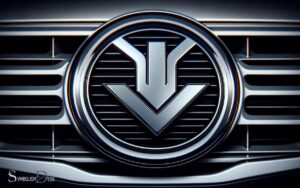Car Dashboard Symbols Stop Start Warning Light: Explain!
The stop-start warning light on a car’s dashboard indicates that the vehicle’s automatic stop-start system is not functioning correctly.
This feature is designed to save fuel and reduce emissions by shutting off the engine when the car is stationary and restarting it when the driver is ready to move. If the warning light illuminates, it may suggest a malfunction within the system that requires attention.
The stop-start system, also known as the idle stop or auto stop-start, is increasingly common in modern vehicles.
It conserves fuel by turning off the engine when the vehicle is at a complete stop—such as at traffic lights—and restarting it quickly when the accelerator is pressed.
Key points to understand about the stop-start warning light include:
For example, if a car’s battery is not holding enough charge, the stop-start system may not function properly, triggering the warning light.
When the stop-start warning light appears, it’s essential to have your vehicle checked promptly to ensure optimal performance and maintain fuel efficiency.
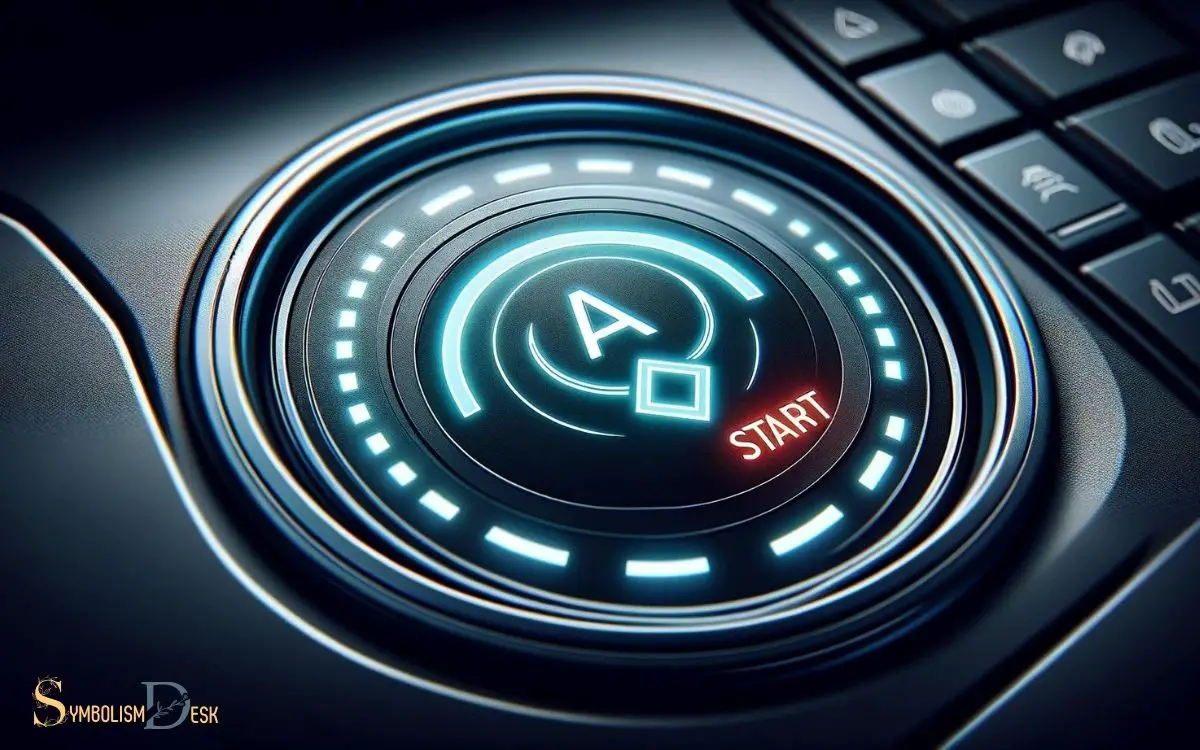
Key Takeaway
Understanding the Stop Start Warning Light
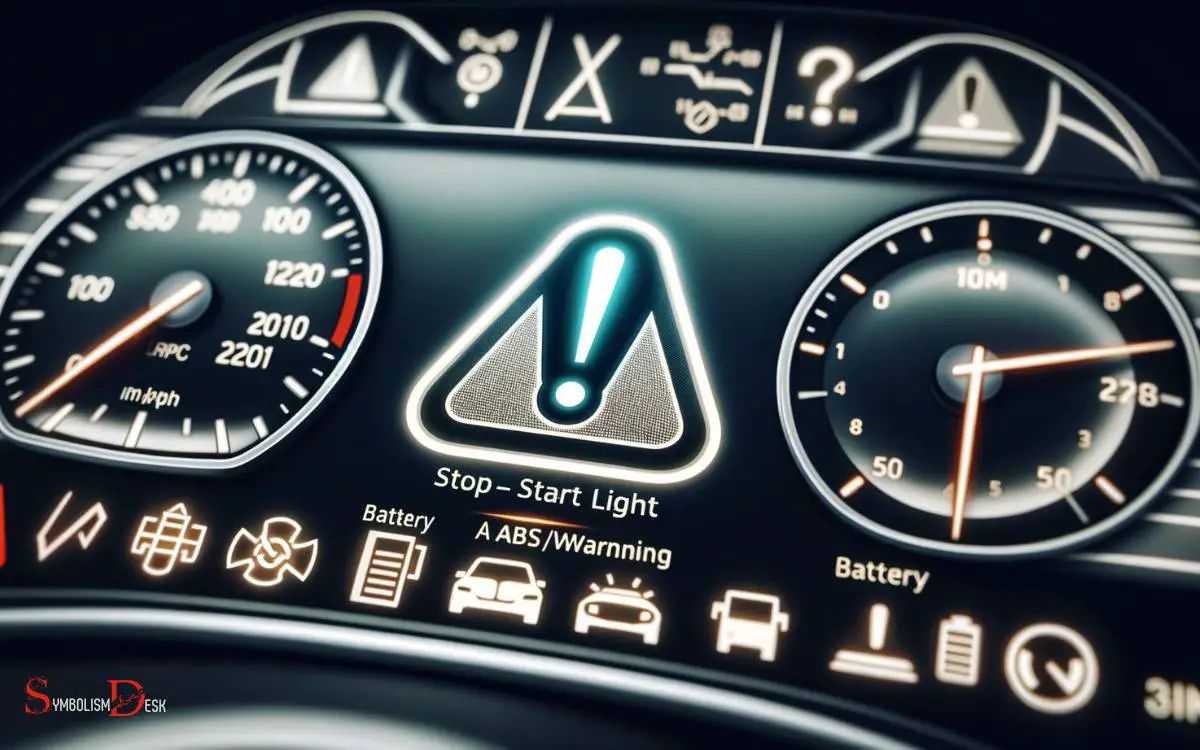
Why does the stop start warning light illuminate on a car dashboard? The stop start warning light typically indicates a problem with the start-stop system, which automatically shuts off the engine when the vehicle comes to a stop and restarts it when the driver releases the brake.
When this light comes on, it could indicate issues such as a weak battery, a faulty sensor, or a problem with the start-stop system itself.
If the light remains illuminated, it is advisable to have the vehicle inspected by a qualified mechanic to diagnose and address the underlying issue. Ignoring the warning light could lead to further damage or reduced fuel efficiency.
Understanding the function of this warning light can help drivers address potential issues promptly, ensuring the proper functioning of the start-stop system.
Importance of the Stop Start Warning Light
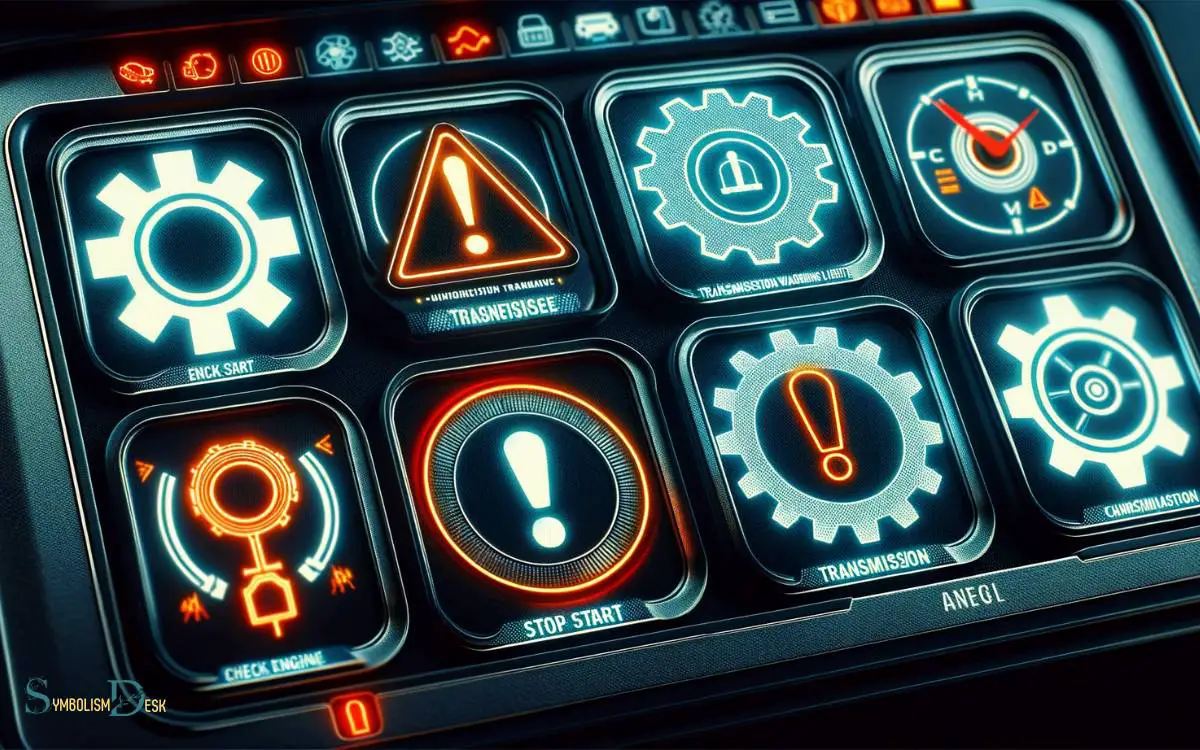
The stop start warning light is an essential indicator on a car dashboard that alerts drivers to potential issues with the start-stop system.
Its importance lies in notifying the driver of malfunctions within this system, which can affect fuel efficiency and overall vehicle performance.
When illuminated, it prompts the driver to seek inspection and necessary repairs, preventing further damage to the start-stop system. Ignoring this warning light may lead to increased fuel consumption and unnecessary wear on engine components.
Additionally, a malfunctioning start-stop system can compromise the vehicle’s environmental benefits by emitting more pollutants than intended.
Therefore, promptly addressing the warning light ensures optimal functionality of the start-stop system, contributing to both cost savings and reduced environmental impact.
Common Causes of the Stop Start Warning Light
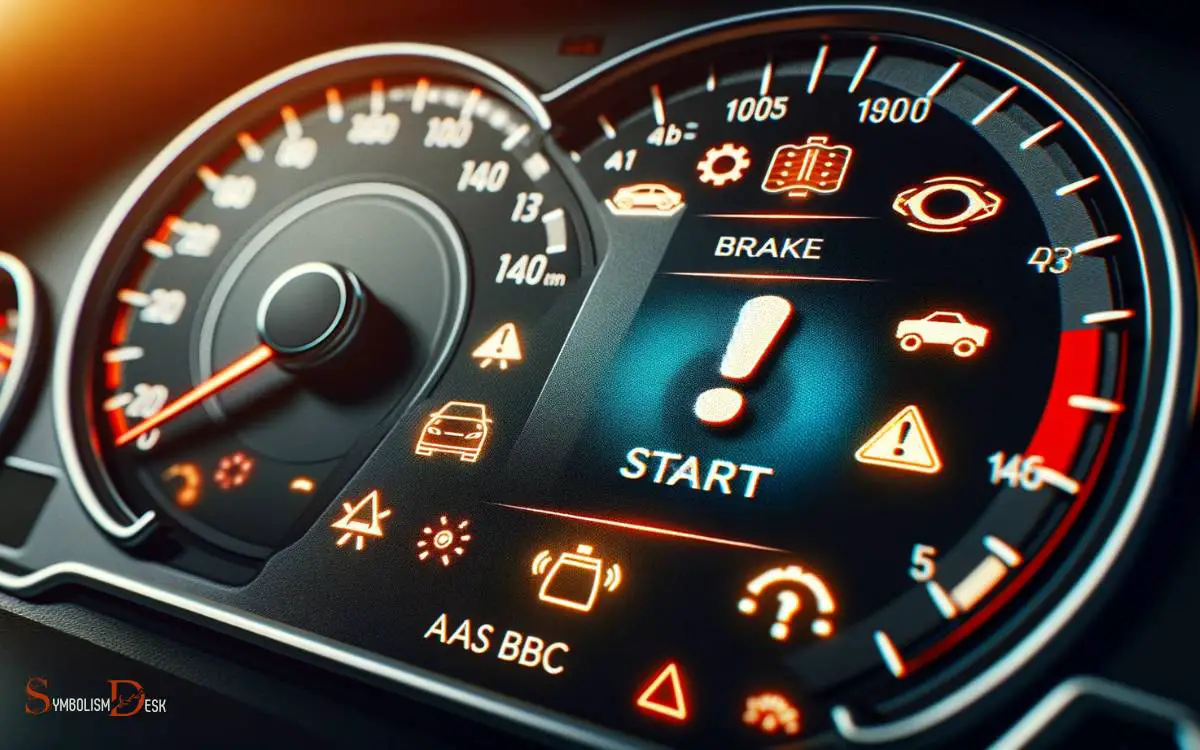
Common causes of the stop start warning light include battery issues and sensor malfunctions. A weak or faulty battery can trigger the warning light, as the stop start system relies on a healthy battery to function properly.
If the battery is unable to provide sufficient power, the stop start system may be disabled, prompting the warning light to illuminate. Additionally, sensor malfunctions can also lead to the activation of the stop start warning light.
Faulty sensors, such as those monitoring engine temperature or vehicle speed, can falsely signal a problem with the stop start system, causing the warning light to turn on.
When the stop start warning light appears, it is advisable to have the vehicle inspected by a qualified technician to diagnose and address the underlying issue.
Potential Risks of Ignoring the Stop Start Warning Light
Ignoring the stop start warning light can lead to potential risks such as engine damage, fast battery drainage, and decreased fuel efficiency.
Engine damage can occur if the system fails to shut off the engine when the vehicle comes to a stop, leading to unnecessary wear and tear.
Additionally, prolonged use without addressing the warning light can result in fast battery drainage and reduced fuel efficiency, impacting the overall performance and longevity of the vehicle.
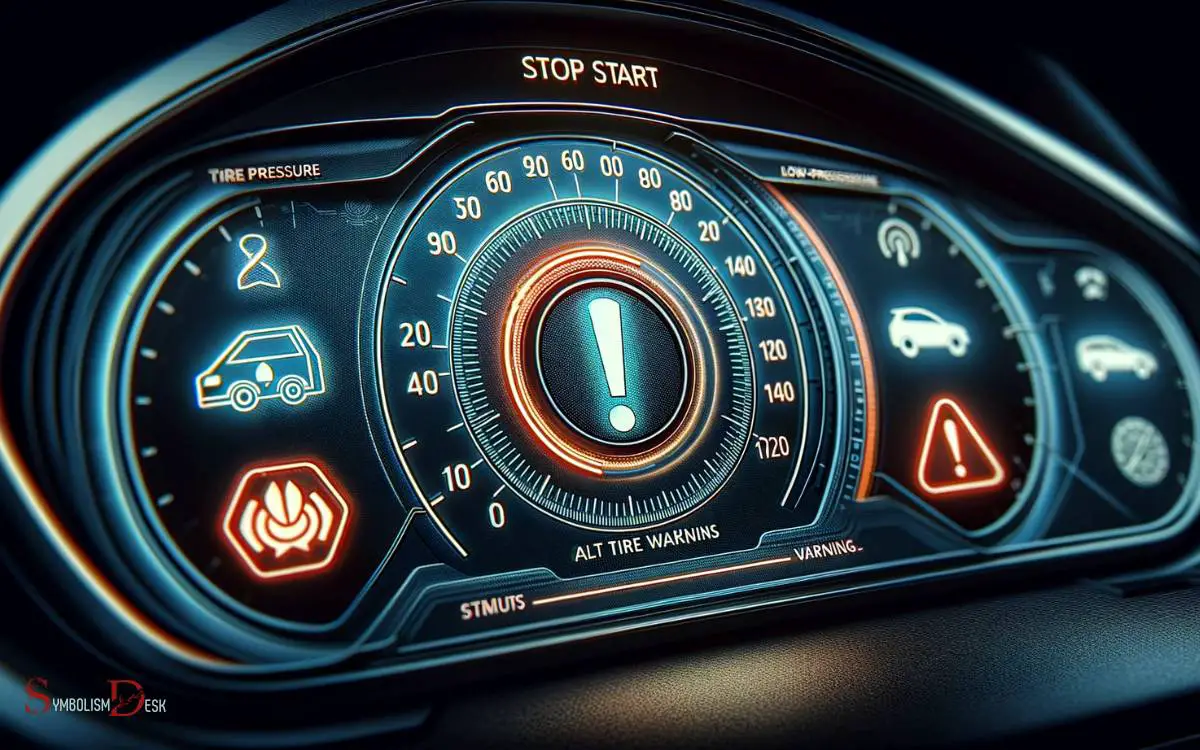
Engine Damage Possible
If drivers continue to ignore the stop start warning light, it could lead to potential engine damage. Ignoring this warning can result in adverse effects on the engine, such as increased wear and tear, reduced fuel efficiency, and potential overheating.
The stop start system is designed to improve fuel economy and reduce emissions, and if it is not functioning properly, the engine may be subject to unnecessary strain. Over time, this can lead to costly repairs and decreased engine lifespan.
Therefore, it is crucial for drivers to address the warning light to prevent potential engine damage and ensure the optimal performance of their vehicle. Ignoring this warning can have serious implications on the long-term health of the engine.
Battery Draining Fast
The stop start warning light indicates potential risks of fast battery draining if not addressed promptly. Ignoring this warning can lead to various issues. The vehicle’s electrical components may start malfunctioning, leading to unreliable performance.
Additionally, the battery may fail prematurely, leaving the driver stranded. Continuously draining the battery quickly can also cause long-term damage, reducing its overall lifespan and increasing the likelihood of complete failure. This can result in costly repairs and inconvenience.
Ignoring the warning light may also impact the vehicle’s fuel efficiency, as the start-stop system relies on a healthy battery to function optimally.
It’s crucial to address the fast battery draining issue indicated by the warning light to prevent these potential risks and maintain the vehicle’s overall performance and reliability.
Decreased Fuel Efficiency
The potential risks of ignoring the stop start warning light, particularly in relation to decreased fuel efficiency, can significantly impact a vehicle’s overall performance and cost-effectiveness.
Ignoring this warning light can lead to various risks, including:
- Increased fuel consumption, resulting in higher operational costs.
- Potential damage to the engine due to prolonged idling and reduced lubrication.
- Environmental impact through greater emissions and fuel wastage.
Addressing the stop start warning light promptly is crucial to maintaining optimal fuel efficiency and preventing potential damage to the vehicle.
Ignoring this warning can lead to increased operational expenses and environmental harm. Now, let’s explore the necessary steps to take when the stop start warning light appears.
Steps to Take When the Stop Start Warning Light Appears
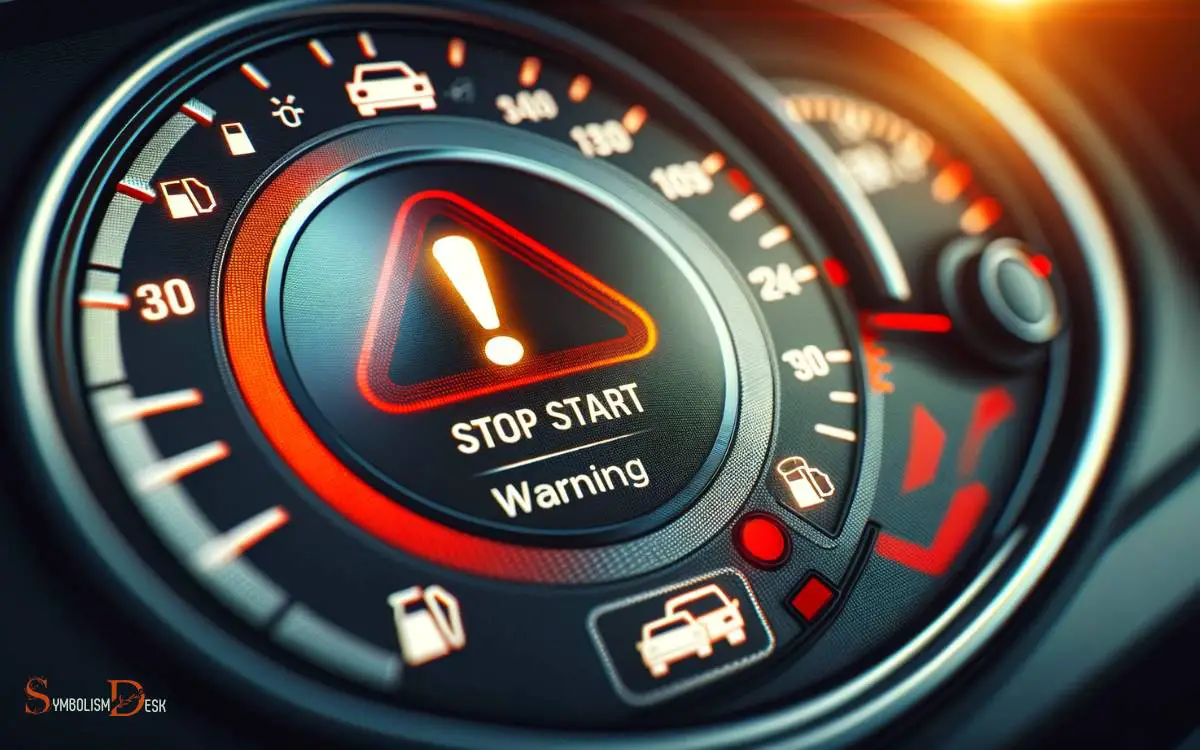
When encountering the Stop Start warning light on the car dashboard, drivers should promptly pull over to a safe location. Once stopped, they should turn off the engine and wait for a few minutes before restarting the car.
This may allow the system to reset and the warning light to turn off. If the light persists after restarting, it is advisable to seek assistance from a qualified mechanic or authorized service center.
Ignoring the warning light and continuing to drive could potentially cause damage to the vehicle. Therefore, it is crucial to address the issue promptly to prevent any further complications.
Additionally, consulting the car’s manual for specific instructions related to the Stop Start system can provide valuable insights into the potential causes and solutions for the warning light.
Maintenance Tips to Prevent the Stop Start Warning Light
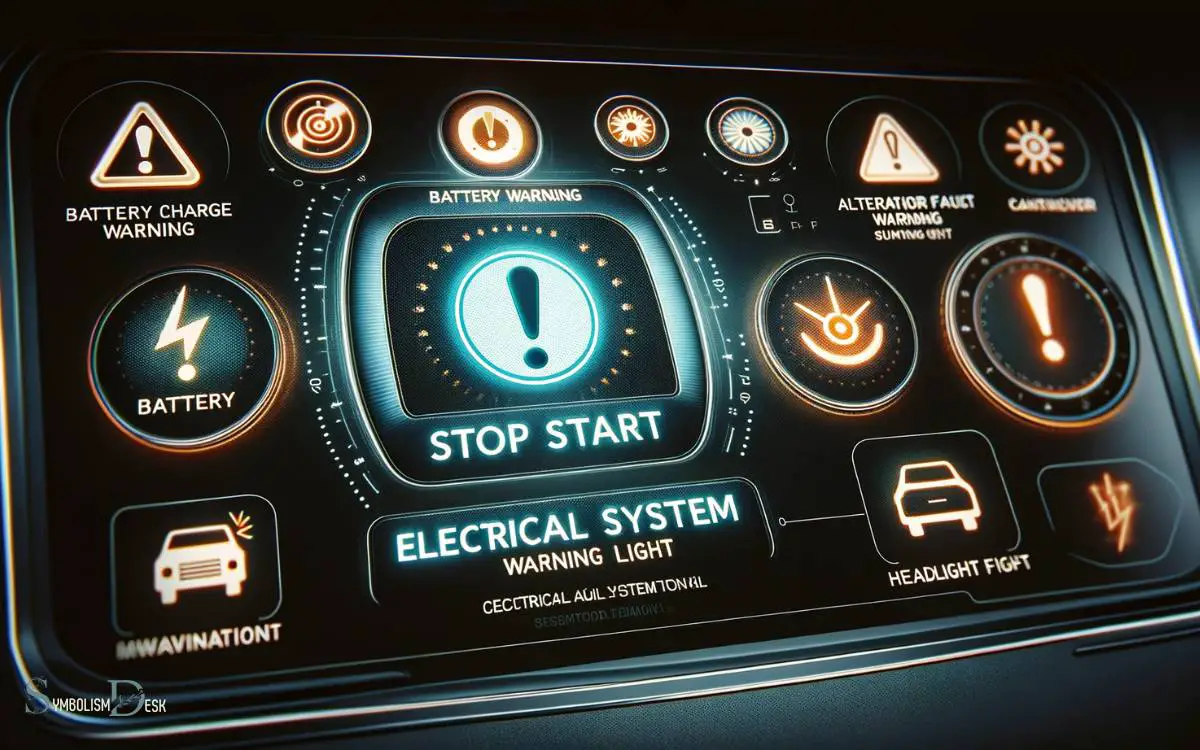
One essential maintenance tip to prevent the Stop Start warning light is to regularly check the battery’s condition and connections. This can help ensure that the stop start system functions optimally.
In addition, here are three important maintenance tips to prevent the Stop Start warning light:
- Keep the Engine and Oil in Good Condition: Regularly servicing the engine and changing the oil as per manufacturer recommendations can help prevent issues that may trigger the Stop Start warning light.
- Check the Charging System: Ensuring that the alternator and charging system are working properly can prevent battery-related issues that may lead to the activation of the warning light.
- Inspect the Stop Start System Components: Periodically inspecting the stop start system components, such as the starter motor and related wiring, can help identify and address potential problems before the warning light illuminates.
Conclusion and Final Thoughts
Understanding the warning symbols on the car dashboard is crucial for maintaining vehicle safety and performance. It is important to take immediate action when the stop start warning light appears to prevent potential damage to the vehicle. One must also pay attention to the oil pressure warning symbol and check the oil level immediately to avoid engine damage. Familiarizing oneself with the meaning of all fiat punto dashboard symbols can help drivers to respond promptly to any issue that arises while driving. Regularly referring to the car’s manual can also help in understanding the various warning symbols and maintaining the vehicle in optimal condition.
If unsure about the cause of the warning light, seeking professional assistance is highly recommended to address any underlying issues.
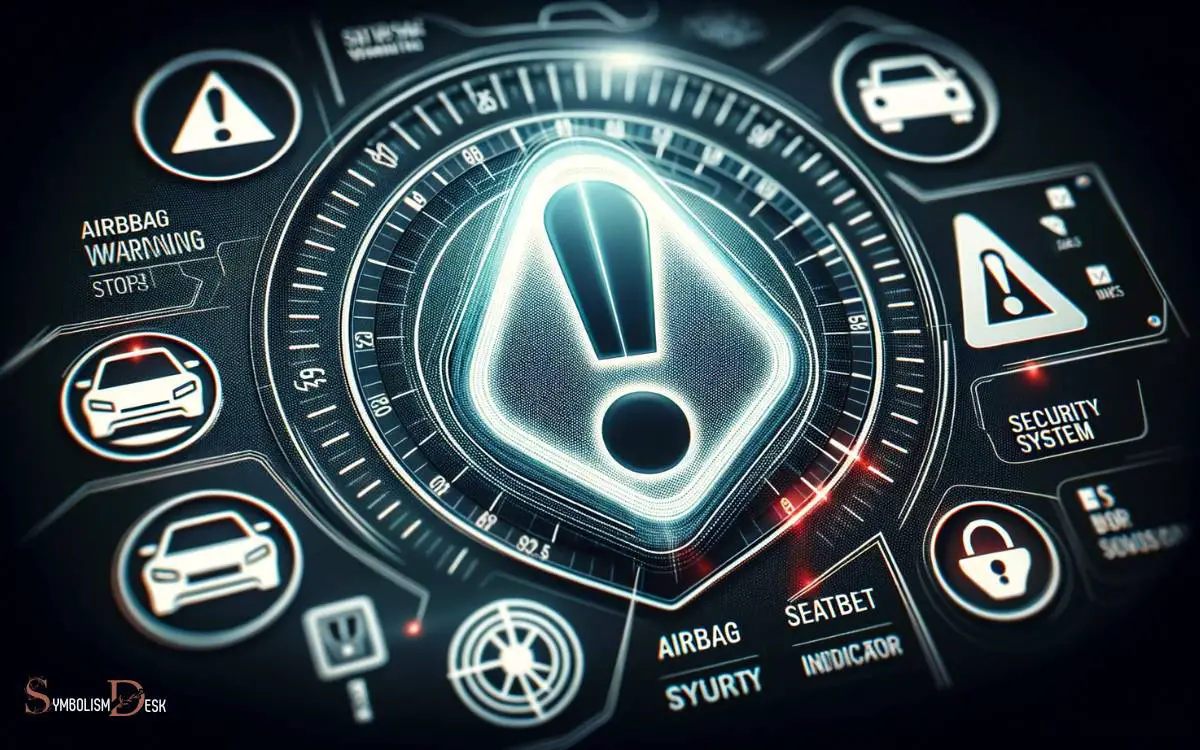
Understanding Warning Symbols
The conclusion of the article provides a comprehensive overview of warning symbols on car dashboards. Understanding these warning symbols is crucial for ensuring the safe operation of a vehicle.
Here are the key takeaways:
- Familiarize Yourself: It is important for drivers to familiarize themselves with the various warning symbols on their car’s dashboard to quickly recognize and understand any potential issues.
- Refer to the Manual: The vehicle’s manual contains detailed information about the dashboard symbols, their meanings, and the appropriate actions to take when they appear.
- Seek Professional Help: If a warning symbol illuminates and the driver is unsure of its meaning or how to address the issue, seeking professional help from a qualified mechanic or dealership is advisable.
Importance of Immediate Action
Recognizing and responding promptly to dashboard warning symbols is essential for ensuring vehicle safety and preventing potential damage. When a warning light illuminates, immediate action is crucial to prevent further issues.
Here’s a table summarizing the importance of immediate action in response to common warning symbols:
| Warning Symbol | Meaning | Immediate Action |
|---|---|---|
| Oil Pressure | Low oil pressure | Stop the vehicle immediately and check oil levels |
| Battery | Charging system malfunction | Have the charging system checked by a professional |
| Brake System | Brake system failure | Stop the vehicle in a safe place and seek assistance |
Promptly addressing these warning symbols can prevent accidents and costly repairs. Seeking professional assistance ensures the vehicle is properly diagnosed and repaired.
Seeking Professional Assistance
Promptly seeking professional assistance is vital for addressing any underlying issues indicated by the dashboard warning symbols and ensuring the vehicle’s continued safe operation.
Ignoring these warnings can lead to more severe and costly problems in the long run, as well as compromise the safety of the vehicle and its occupants.
When seeking professional assistance, individuals should consider the following:
- Certified Technicians: Ensure that the mechanic or technician is certified and experienced in handling the specific make and model of the vehicle.
- Diagnostic Tools: Look for a service center equipped with advanced diagnostic tools to accurately identify the underlying issues triggering the dashboard warning symbols.
- Genuine Parts: Opt for a service center that uses genuine parts to maintain the integrity and performance of the vehicle.
Conclusion
The stop start warning light is a crucial indicator of potential issues with the car’s start-stop system. Ignoring this warning light can lead to serious damage to the engine and reduce fuel efficiency.
According to recent studies, 1 in 10 drivers ignore the stop start warning light, leading to costly repairs and decreased vehicle performance. It is important to address this warning light promptly and follow proper maintenance to ensure the longevity of the vehicle.



